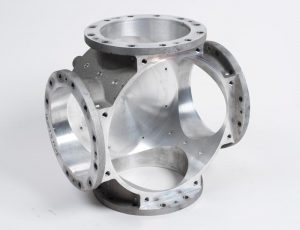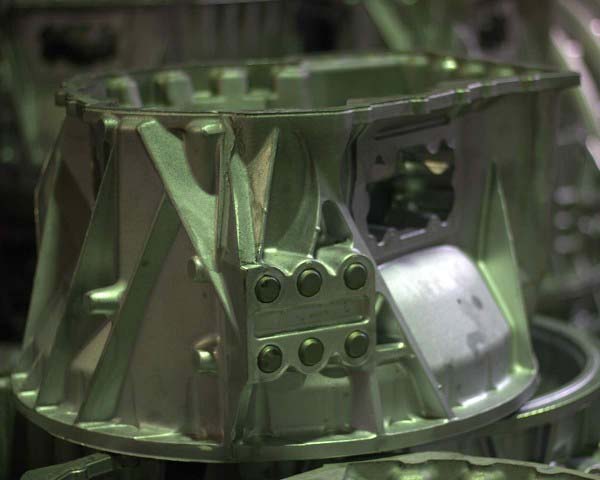Learn why engineers trust Precision aluminum casting for high-quality results
The Relevance of Aluminum Spreading in High-Quality Production Techniques
Aluminum casting has emerged as a cornerstone in high-grade production strategies. Its lightweight homes and phenomenal stamina make it a favored selection for different industries. Producers gain from its style flexibility and minimal waste generation. As the demand for advanced products expands, comprehending the nuances of light weight aluminum casting becomes necessary. This exploration discloses not just its advantages but additionally the advancing modern technologies that shape its future in manufacturing. What lies ahead for this ingenious process?

The Advantages of Light Weight Aluminum Spreading
Although various casting approaches exist, aluminum casting attracts attention because of its countless advantages. One of the key benefits is its lightweight nature, which considerably reduces transportation prices and energy consumption in applications. Aluminum additionally displays superb corrosion resistance, making it excellent for resilient parts in diverse environments. The spreading procedure permits elaborate designs, making it possible for producers to generate intricate shapes with high precision and very little waste. Additionally, aluminum has remarkable thermal and electrical conductivity, making it ideal for an array of commercial applications. The high strength-to-weight proportion enhances the architectural honesty of actors products, supplying longevity without the included mass. Light weight aluminum spreading can be adjusted to various techniques, such as sand casting or die spreading, which widens its applicability across industries. In general, these advantages placement aluminum spreading as a recommended option in modern-day production, adding to effectiveness and sustainability.
Trick Applications of Light Weight Aluminum Casting
Light weight aluminum casting locates substantial applications throughout various industries due to its advantageous residential or commercial properties. In the vehicle industry, it is commonly made use of for making engine blocks, transmission cases, and wheels, promoting lightweight designs that improve gas efficiency. The aerospace sector also gains from light weight aluminum casting, where parts such as brackets and real estates are produced to fulfill rigorous weight and strength demands.
In addition, the electric industry employs aluminum casting for creating housings and heat sinks, which are vital for efficient thermal administration in electronic tools. Precision aluminum casting. The construction sector makes use of light weight aluminum spreadings for architectural elements, home window frameworks, and fixtures, contributing to both visual appeals and durability
Last but not least, the customer goods market incorporates aluminum spreading in items like pots and pans and sporting equipment, leveraging the material's strength and rust resistance. In general, the adaptability of aluminum spreading makes it an essential procedure in conference diverse manufacturing requires throughout numerous fields.
The Process of Aluminum Casting
Casting light weight aluminum entails several well-defined actions that change basic materials into completed elements. The process begins with melting aluminum in a heating system, getting to temperature levels around 660 levels Celsius. Once melted, the liquid aluminum is poured into a mold, which takes the form of the wanted part. Numerous mold and mildew types, including sand, permanent, and investment molds, are used depending upon the application.
After pouring, the aluminum cools down and strengthens, developing a rough casting. This casting undergoes a series of finishing processes, such as machining, to achieve precise dimensions and surface quality. Quality assurance actions are implemented throughout to guarantee the honesty and toughness of the last item. When all processes are complete, the finished light weight aluminum parts are all set for different applications, showcasing the adaptability and effectiveness of aluminum casting in manufacturing strategies. Each action is essential in attaining top notch outcomes, making this process essential in manufacturing sectors.
Advancements in Aluminum Casting Modern Technology
Current developments in aluminum casting modern technology have transformed manufacturing processes considerably. Technologies such as sophisticated casting approaches, combination of smart production, and sustainability methods are improving the market. These developments not just enhance performance yet likewise address environmental problems, leading the means for an extra sustainable future in aluminum spreading.
Advanced Spreading Approaches
As makers seek greater performance and sustainability in production, ingenious innovations in aluminum casting modern technology have actually emerged to meet these needs. Advanced casting techniques, such as die spreading, financial investment casting, and sand spreading, have been refined to improve accuracy and decrease waste. Pass away casting allows for faster production prices and tighter tolerances, making it perfect for high-volume things. Financial investment spreading, known for its capability to produce complex geometries, makes it possible for detailed layouts with superior surface area coatings. Sand spreading stays popular for its adaptability and cost-effectiveness, particularly in low-volume applications. These approaches not just improve the top quality of light weight aluminum elements yet likewise contribute to reduced energy consumption, aligning with industry objectives for sustainable methods in producing processes.
Smart Production Assimilation
Just how can smart manufacturing assimilation transform light weight aluminum casting technology? By including sophisticated innovations such as the Web of Points (IoT), synthetic knowledge (AI), and data analytics, clever manufacturing boosts performance and precision in aluminum spreading procedures. Real-time monitoring of tools and assembly line permits immediate changes, minimizing waste and downtime. Anticipating maintenance powered by AI decreases devices failings, making certain constant top quality. Additionally, data analytics can maximize casting criteria and layouts, leading to far better material utilization and lowered cycle times. These advancements assist in seamless interaction between makers and operators, cultivating a much more agile production atmosphere. In general, clever production assimilation substantially elevates the capabilities of aluminum casting, advertising better outcomes and more responsive production techniques.
Sustainability Innovations
While the light weight explanation aluminum casting market faces boosting pressure to embrace sustainable web link methods, innovations are emerging that considerably minimize its ecological effect. Advanced recycling methods now make it possible for producers to make use of up to 95% recycled aluminum, considerably reducing energy intake and waste generation. Furthermore, the assimilation of low-emission technologies, such as electrical melting furnaces, minimizes greenhouse gas exhausts connected with standard spreading methods. In addition, the development of environment-friendly coverings and binders changes harmful chemicals, improving work environment safety and security and decreasing ecological air pollution. These developments not just straighten with global sustainability goals yet additionally improve the overall effectiveness and top quality of light weight aluminum items. As the industry develops, these improvements will certainly play an essential role in promoting a much more lasting future for light weight aluminum spreading.
Contrasting Light Weight Aluminum Casting With Various Other Approaches
In comparing aluminum spreading with various other manufacturing methods, several vital aspects arise. Expense effectiveness, stamina and longevity, and design flexibility act as vital metrics for analysis (aluminum casting). Evaluating these elements can supply understandings into the advantages and limitations of light weight aluminum spreading in numerous manufacturing contexts
Price Effectiveness Analysis
Cost performance stays a vital consideration in making procedures, particularly when evaluating light weight aluminum casting versus alternate methods. Light weight aluminum casting often provides a lower first investment contrasted to techniques click here for more info such as steel building or machining, which need even more sophisticated and expensive tools. Furthermore, light weight aluminum's lightweight nature can lower transportation prices and energy intake during manufacturing. The ability to develop complex shapes with marginal waste additionally enhances its cost-effectiveness, as much less product is discarded throughout the manufacturing procedure. Light weight aluminum casting normally permits for quicker production cycles, leading to decreased labor prices and faster turn-around times. To sum up, when contrasting price efficiency, aluminum spreading regularly becomes a desirable choice, using manufacturers financial benefits along with high-quality output.
Stamina and Longevity
Strength and sturdiness are important factors when evaluating manufacturing methods, especially in the context of aluminum casting. Contrasted to various other approaches such as plastic shot molding and steel fabrication, aluminum casting provides unique advantages. The fundamental residential or commercial properties of aluminum, integrated with the spreading procedure, lead to lightweight yet robust elements that can stand up to substantial stress and environmental factors. Unlike plastics, which may degrade over time, light weight aluminum keeps its honesty and efficiency under high temperature levels and pressures. Additionally, while steel components can be larger and vulnerable to rust, aluminum resists rusting, boosting long life. This combination of strength and resilience makes aluminum casting a recommended option for markets requiring trusted efficiency sought after applications, such as automobile and aerospace fields.
Style Versatility Comparison

The Future of Light Weight Aluminum Casting in Production
How will innovations in innovation form the future of light weight aluminum spreading in manufacturing? The integration of automation and synthetic intelligence is anticipated to revolutionize light weight aluminum casting processes. These innovations can enhance accuracy and performance, lowering waste and production prices. Additionally, the introduction of 3D printing strategies enables fast prototyping and personalized layouts, enabling producers to respond quickly to market needs.
Sustainability is additionally a vital emphasis, with technologies focused on reducing energy consumption and reducing environmental effect. Methods such as die spreading and financial investment spreading are evolving to incorporate recycled aluminum, promoting a circular economic climate.
Moreover, improvements in products scientific research might cause the growth of lighter, more powerful light weight aluminum alloys that can increase the applications of light weight aluminum spreading throughout different sectors. In general, the future of aluminum casting in manufacturing will likely be characterized by increased sustainability, adaptability, and performance, placing it as an important element of contemporary production methods.
Often Asked Concerns
Exactly How Does Light Weight Aluminum Spreading Impact Environmental Sustainability?
Light weight aluminum spreading positively influences environmental sustainability by promoting recycling, lowering power consumption contrasted to various other metals, and decreasing waste. Its lightweight buildings likewise lead to decrease emissions throughout transportation, sustaining greener methods in various sectors.
What Are the Expense Implications of Light Weight Aluminum Casting?
Light weight aluminum spreading typically entails greater initial expenses due to product and handling expenses. Its longevity and lightweight buildings can yield long-lasting financial savings by reducing maintenance and transportation expenses, inevitably balancing the financial ramifications for makers.
Can Light Weight Aluminum Spreading Be Recycled Effectively?
Aluminum casting can be recycled successfully, as the product preserves its residential or commercial properties throughout the recycling process. This enables for the manufacturing of top quality components while reducing waste and minimizing power usage connected with brand-new light weight aluminum production.
What Security Procedures Are Needed During Aluminum Casting?
Safety steps during aluminum spreading consist of making use of individual safety devices like goggles and handwear covers, ensuring proper ventilation, maintaining equipment, and following methods for taking care of liquified steel to protect against burns, breathing risks, and other potential crashes.

Just How Does Light Weight Aluminum Spreading Affect Item Layout Adaptability?
Light weight aluminum spreading improves item style adaptability by making it possible for detailed forms and light-weight frameworks. This strategy allows designers to discover cutting-edge arrangements, leading to flexible applications throughout different industries while maintaining toughness and durability in the end products.
Aluminum casting can be adjusted to numerous methods, such as sand casting or pass away spreading, which broadens its applicability across sectors. As soon as all procedures are full, the ended up light weight aluminum elements are ready for numerous applications, showcasing the adaptability and effectiveness of light weight aluminum spreading in manufacturing strategies. As makers seek better effectiveness and sustainability in production, cutting-edge improvements in aluminum spreading technology have actually emerged to fulfill these demands. Unlike plastic shot molding, which may call for comprehensive tooling changes for style changes, light weight aluminum casting can fit modifications a lot more easily during the manufacturing cycle. Developments in products science might lead to the development of lighter, stronger light weight aluminum alloys that could broaden the applications of light weight aluminum casting throughout various markets.